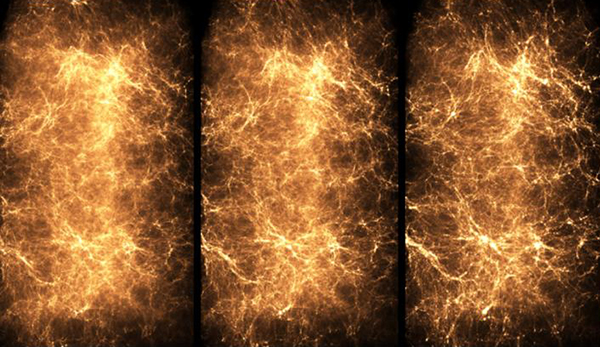The Q Continuum simulation, one of the largest cosmological simulations ever performed, has modeled the evolution of the universe from just 50 million years after the Big Bang to the present day.DOE’s Argonne National Laborator led the simulation on the Titan supercomputer at DOE’s Oak Ridge National Laboratory.
Over the course of 13.8 billion years, the matter in the universe clumped together to form galaxies, stars, and planets. These kinds of simulations help scientists understand dark energy (a form of energy that affects the expansion rate of the universe) and the distribution of galaxies, composed of ordinary matter and mysterious dark matter.





